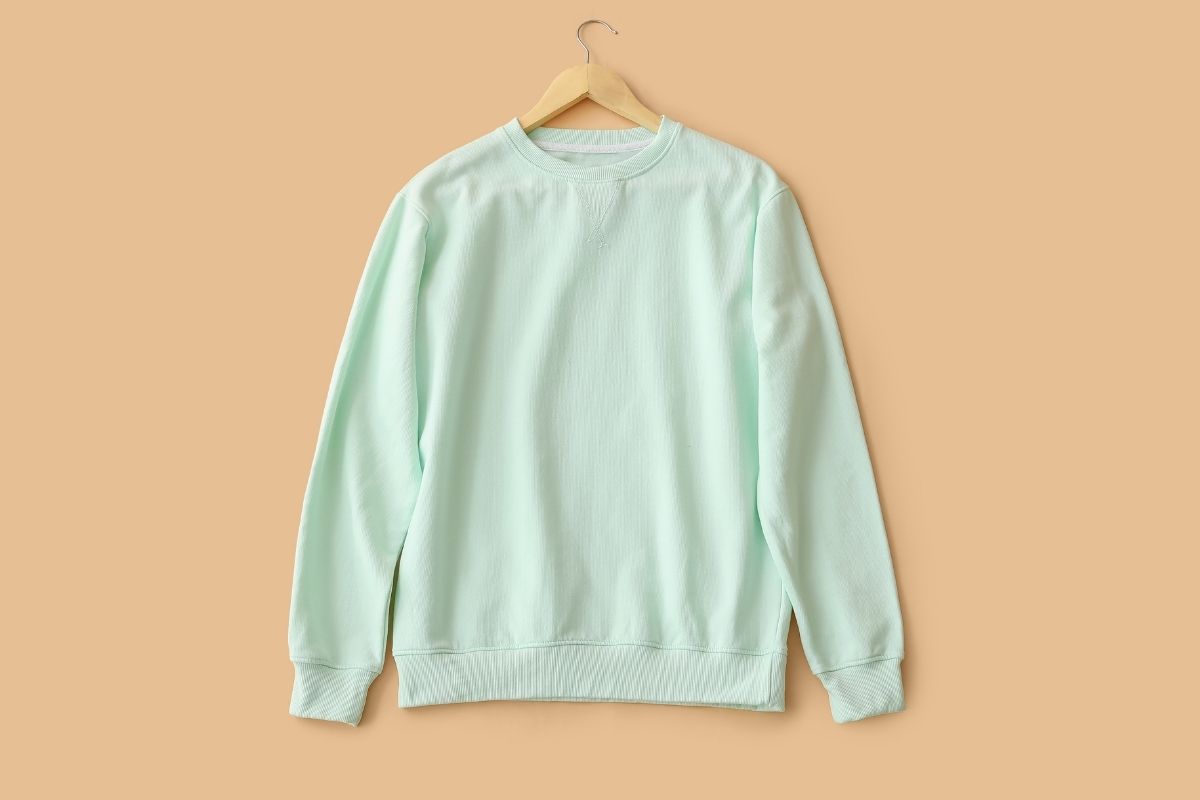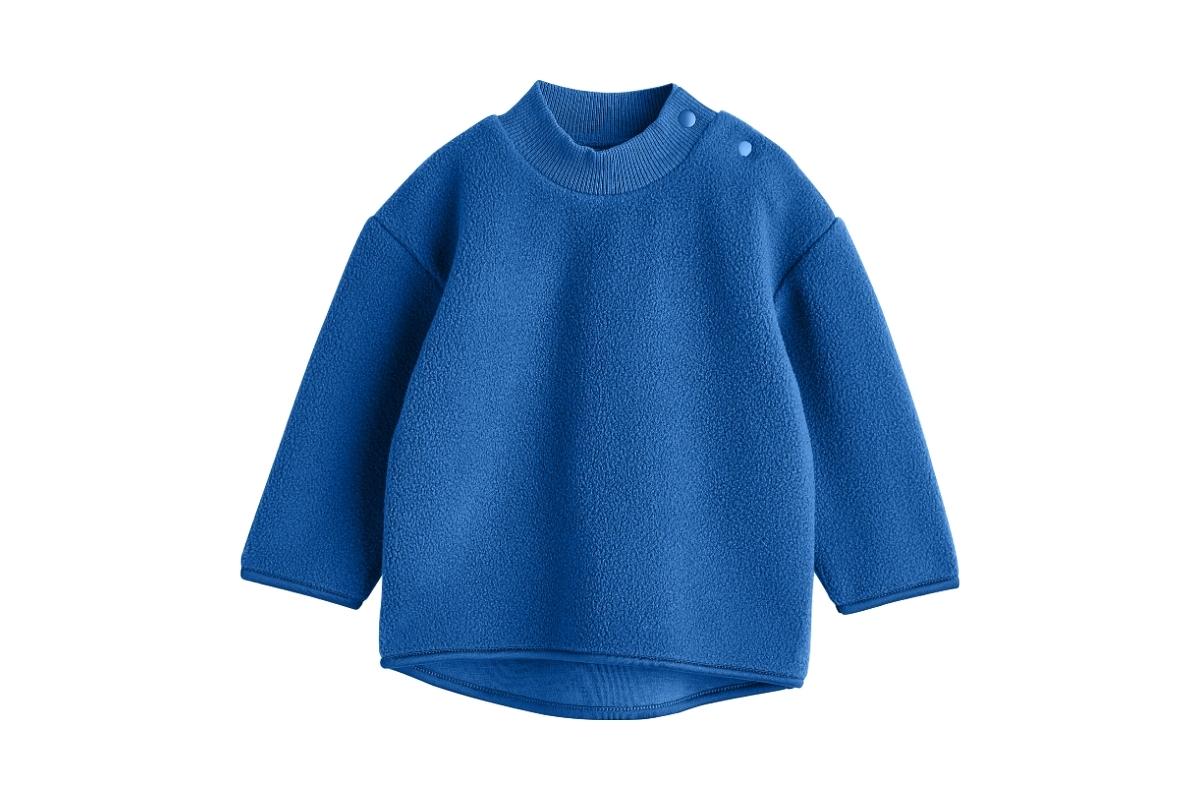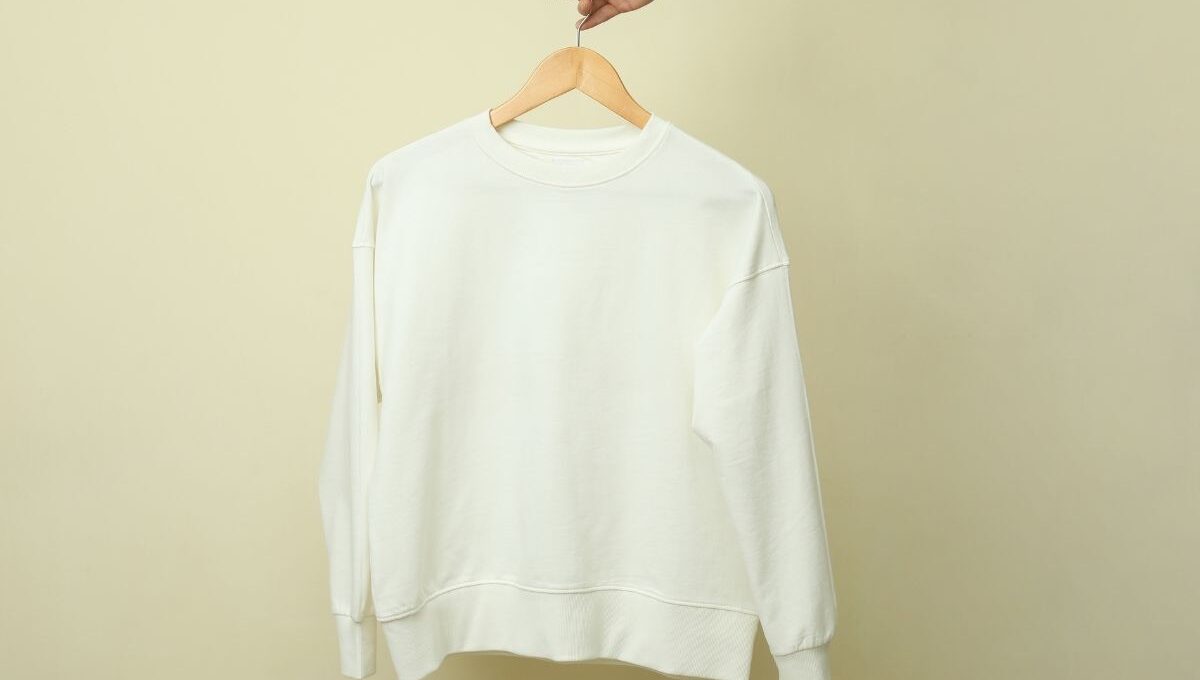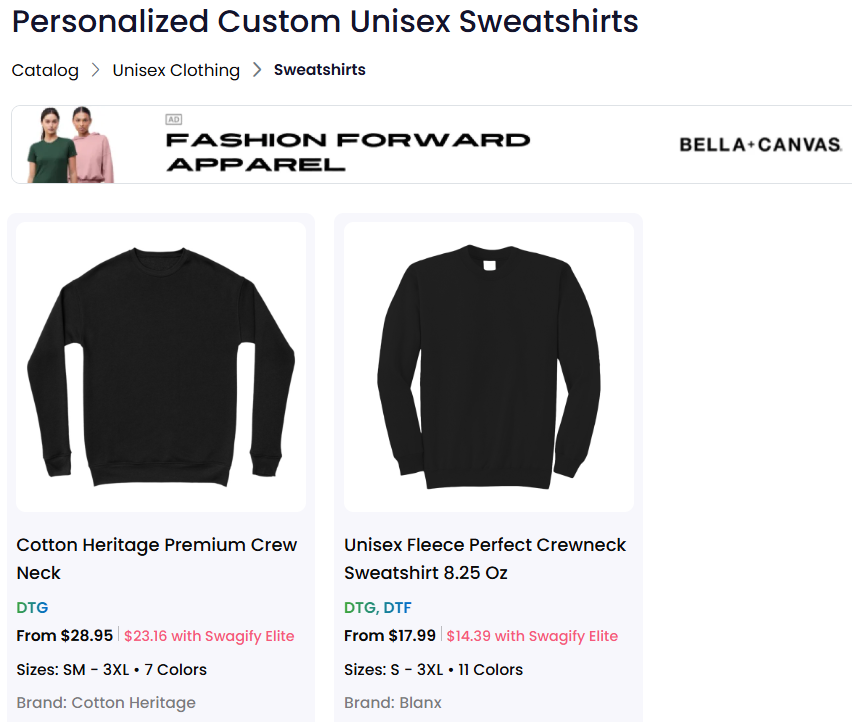Introduction
Not all sweatshirts are created equal—and what’s often overlooked is what they’re made of. While style and fit catch your attention, the fabric determines whether your sweatshirt will be breathable or stuffy, long-lasting or quick to fade, cozy or scratchy.
In 2025, with so many styles flooding the market—from luxury French terry to rugged tech fleece—choosing the men’s sweatshirt fabrics is essential to making a smart, long-term purchase.
Table of Contents
Whether you’re hitting the gym, lounging at home, or braving winter winds, this guide breaks down exactly what you need to know about men’s sweatshirt fabrics, from performance to comfort and care.
Why Fabric Choice Matters
You can’t judge a sweatshirt by looks alone. The fabric directly affects:
- Comfort – Will it keep you warm without overheating?
- Durability – Will it retain its shape after multiple washes?
- Functionality – Is it meant for lounging, working out, or layering?
- Cost-effectiveness – Will it stay wearable for years, or fade fast?
Choosing the right material ensures better temperature control, improved fit retention, and a sweatshirt that matches your lifestyle—not just your outfit.
Types of men’s sweatshirt fabrics & Their Benefits
Let’s break down the most common fabrics used in men’s sweatshirts and what each one brings to the table:
1. 100% Cotton
- Natural, breathable, and soft against the skin
- Hypoallergenic, ideal for sensitive skin
- May shrink after washing; wrinkles easily
Best for: Casual wear, everyday use, mild climates
Example: Classic crewneck sweatshirts or minimal streetwear staples
2. Cotton Fleece
- Brushed inside for a warm, soft feel (think: cozy hoodies)
- Traps warmth while still being breathable
- Slightly heavier than standard cotton
Best for: Cold-weather lounging, layering for fall/winter
Example: Heritage-style hoodies, comfort-focused loungewear
3. French Terry
- Loop-back texture on the inside
- Lightweight and moisture-wicking
- Offers a sporty yet polished look
Best for: Spring and fall layering, post-gym wear
Example: Athleisure brands, smart-casual streetwear
4. Polyester/Nylon
- Strong, wrinkle-resistant, and moisture-wicking
- Dries faster than cotton
- May feel less breathable, but more durable
Best for: Workout gear, rainy-day layering, outdoor activewear
Example: Technical sweatshirts, gym-ready quarter-zips
5. Cotton-Polyester Blends
- Combines softness of cotton with durability of polyester
- Resists shrinking and wrinkling
- Often more affordable and longer-lasting
Best for: Daily wear, school or office casual, low-maintenance style
Example: Standard logo sweatshirts, team or brand merchandise
6. Poly or Cotton Fleece
- Thick, plush feel with excellent warmth retention
- Some are wind-resistant or water-repellent
- Can feel bulky but traps heat well
Best for: Winter weather, layering in freezing temps
Example: High-loft hoodies, snowboarder or mountain styles
7. Wool/Cashmere
- Naturally insulating, breathable, and moisture-regulating
- High-end but may be itchy without blending
- More fragile and requires special care
Best for: Premium winter layering, upscale casual
Example: Designer sweatshirts, refined winter layers
8. Microfiber
- Ultra-lightweight and moisture-wicking
- Often wind- or water-resistant
- Quick-drying, but less breathable
Best for: High-output workouts, summer travel, tropical weather
Example: High-performance athletic hoodies
9. Lycra/Spandex Blends
- Adds stretch for flexibility and comfort
- Helps fitted sweatshirts maintain shape
- Often combined with cotton or synthetics
Best for: Slim-fit styles, athletic movements, and long wear
Example: Compression tops, sport-styled sweatshirts
How to Choose the Best Men’s Sweatshirt Fabrics
| Fabric Type | Best For | Key Features |
|---|---|---|
| Cotton | Everyday wear, casual outfits, kids’ clothing | Soft, breathable, easy to wash, but may wrinkle easily |
| Polyester | Activewear, uniforms, budget-friendly fashion | Durable, wrinkle-resistant, quick-drying, not very breathable |
| Linen | Summer outfits, beachwear, casual suits | Lightweight, breathable, moisture-wicking, tends to wrinkle |
| Wool | Winter clothing, formalwear, suits | Warm, insulating, moisture-resistant, may require dry cleaning |
| Silk | Luxury wear, evening dresses, scarves | Smooth, shiny, breathable, delicate—requires gentle handling |
| Denim | Jeans, jackets, casual wear | Sturdy, structured, fades with wash, long-lasting |
| Fleece | Outerwear, loungewear, cold-weather gear | Warm, soft, lightweight, great for insulation |
| Nylon | Outdoor gear, windbreakers, travel clothing | Strong, water-resistant, lightweight, not very breathable |
| Rayon/Viscose | Draped clothing, blouses, dresses | Soft, breathable, has a silky texture, less durable over time |
| Spandex/Elastane | Leggings, swimwear, stretch garments | High elasticity, blends well with other fabrics, form-fitting |
Sweatshirts are as versatile as the people wearing them—but different situations call for different materials. Here’s how to match the fabric with your lifestyle:
1. If You Want Warmth and Softness
- Go for: Cotton fleece, wool blends, cashmere
- Perfect for: Winter lounging, casual days at home, snowy errands
- Why it works: Traps heat and feels incredibly soft against the skin
2. If You Want Breathability
- Go for: 100% cotton, French terry
- Perfect for: Mild climates, office wear, light layering
- Why it works: Allows airflow while maintaining modest warmth
3. If You Want Sweat-Wicking Performance
- Go for: Polyester, microfiber, or poly blends
- Perfect for: Intense workouts, sports practice, hiking
- Why it works: These synthetic fibers move moisture away from the body
4. If You Want Long-Term Durability
- Go for: Cotton-poly blends, Lycra-infused fabrics
- Perfect for: Frequent use, travel, machine washing
- Why it works: They resist shrinking, pilling, and losing shape
5. If You Prefer Eco-Friendly Options
- Go for: Organic cotton, recycled polyester
- Perfect for: Sustainable fashion and ethical choices
- Why it works: Same comfort with lower environmental impact
Fabric Weight Guide: Lightweight vs. Heavyweight

Not sure how thick your sweatshirt should be? Here’s how to gauge fabric weight:
Lightweight (Under 7 oz)
- Great for summer nights or layering
- Breathable, less structured
- Best for French terry, performance blends
Midweight (7–9 oz)
- The all-season winner
- Balance of warmth and flexibility
- Ideal for cotton-poly blends, everyday fleece
Heavyweight (Over 9 oz)
- Feels rugged, warm, and substantial
- Great for outdoor layering, freezing weather
- Found in high-end fleece or insulated wool-blends
Why Custom Sweatshirts Are the Best Choice
| Reason | Description |
|---|---|
| Personalized Style | Design your sweatshirt with names, graphics, or logos to reflect your identity or brand. |
| Perfect for Gifting | Custom sweatshirts make thoughtful and unique gifts for birthdays, holidays, or events. |
| Great for Teams & Events | Ideal for sports teams, school groups, or corporate events to create unity and recognition. |
| Comfort & Fit | Choose fabric, cut, and size that match your comfort preferences and body type. |
| Brand Promotion | A walking billboard—perfect for businesses looking to spread brand awareness. |
| Durable & Long-Lasting | High-quality custom sweatshirts often use better materials and printing methods. |
| Eco-Friendly Options | Many platforms offer sustainable fabrics and ethical production choices. |
| Stand Out from the Crowd | Avoid mass-produced styles and showcase your creativity through design. |
| Year-Round Versatility | Wear them solo in spring/fall or layer up during colder months. |
| Easy to Design Online | Many websites offer user-friendly tools to design and preview your sweatshirt instantly. |
In a world of mass production, custom sweatshirts offer something that ready-made ones can’t: personal relevance, higher quality control, and a better fit for your lifestyle.
Here’s why choosing a custom sweatshirt often leads to a better overall experience:
1. Fabric That Fits Your Climate & Needs
Custom sweatshirts allow you to choose the fabric based on where and how you’ll wear it:
- Want breathable comfort? Choose French terry or cotton blends.
- Need warmth? Opt for heavyweight fleece or wool-lined interiors.
- Going sporty? Pick performance fabrics like polyester or spandex blends.
Mass-market brands don’t offer this level of flexibility.
2. Superior Fit & Functionality
Standard sizes (S, M, L) often fail to fit well across body types. Custom sweatshirts can be tailored to your:
- Shoulder width
- Sleeve length
- Torso proportion
- Style preference (slim fit, oversized, cropped, etc.)
A proper fit isn’t just more flattering — it’s also more comfortable and practical.
3. Unique Style that Reflects You
With custom sweatshirts, you control:
- Colors
- Graphics
- Embroidery or logos
- Personalization (name, initials, quote)
This means you’ll never run into someone else wearing your sweatshirt—and that’s the definition of modern style: individuality over trends.
4. Higher Quality Materials & Stitching
Many mass-produced sweatshirts cut costs by using thinner fabric, weak seams, or short-lived dye. When you choose custom:
- You often get premium, long-wear fabrics
- Stitching is reinforced for durability
- Graphics are printed or embroidered with care
Result: Your sweatshirt lasts longer and looks better, even after multiple washes.
Sustainable & Ethical Production
Custom sweatshirts are often made in small batches or made-to-order, reducing overproduction and waste. Many custom makers also:
- Use organic or recycled fabrics
- Offer local manufacturing options
- Avoid the environmental toll of fast fashion
If you care about conscious consumerism, custom is a step in the right direction.
6. Great for Branding or Gifting
Whether you’re a startup, an artist, or just someone looking to stand out:
- Custom sweatshirts are excellent for business branding, teamwear, or event merch
- They also make memorable gifts with personalized messages or design elements
Care & Maintenance Tips For Men’s Sweatshirt Fabrics
| Fabric Type | Care Instructions | Maintenance Tips |
|---|---|---|
| Cotton | Machine wash cold, tumble dry low or air dry. | Wash inside out to preserve print; avoid high heat to prevent shrinkage. |
| Polyester | Machine wash warm, tumble dry low. | Resistant to wrinkles; avoid fabric softeners to maintain moisture-wicking. |
| Cotton-Poly Blend | Wash cold or warm, tumble dry low. | Durable and shrink-resistant; great for everyday wear. |
| Fleece | Wash in cold water, avoid fabric softeners, air dry recommended. | Prevent pilling by washing inside out; use a lint roller if needed. |
| French Terry | Machine wash cold, tumble dry on low or air dry. | Use mild detergent; avoid bleach to maintain fabric softness. |
| Wool or Wool-Blend | Hand wash or dry clean only. | Lay flat to dry; avoid wringing or twisting to preserve shape. |
| Bamboo or Rayon Blend | Wash cold, gentle cycle, line dry or low tumble. | Use gentle detergents; avoid direct sunlight when drying. |
| Organic Cotton | Wash cold with like colors, tumble dry low or line dry. | Avoid harsh detergents; best to air dry to extend life. |
The best sweatshirt can still disappoint if you don’t care for it properly.
- Cotton or Wool: Wash cold, lay flat or hang dry to avoid shrinking
- Polyester/Nylon: Machine wash and tumble dry low
- French Terry/Fleece: Turn inside out; avoid fabric softeners to preserve texture
- Blends: Read care labels carefully—especially with cashmere or spandex inside
Pro Tip: Always check the tag first. Some sweatshirts (especially designer or performance ones) require gentle handling.
Common Mistakes to Avoid

- Buying heavyweight fleece for humid climates: It traps sweat and can become uncomfortable fast. Opt for French terry or cotton instead.
- Skipping spandex blends in slim-fit styles: Pure cotton loses shape quickly. A touch of stretch adds long-term structure.
- Ignoring care instructions: Wool and fleece can shrink or pill without the right washing methods.
- Assuming polyester = cheap: Performance polyester is engineered for activity, not budget wear. Know the difference.
Final Thoughts
With fashion becoming more technical and lifestyle-driven in 2025, knowing your sweatshirt fabric is key to building a comfortable, stylish, and practical wardrobe. Whether you’re dressing for the office, the gym, or a chilly Sunday at home, there’s a fabric that fits your needs perfectly.Make smart choices. Don’t just buy a sweatshirt because it looks good—buy it because it feels good, performs well, and lasts long.





Sign up